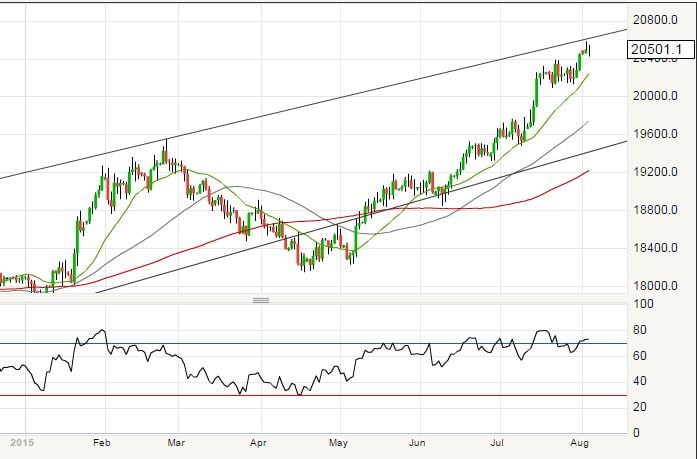Forecasts for Canadian Dollar Against the Pound and US Dollar
- Written by: Gary Howes
-
Our latest Canadian dollar forecasts covering GBP/CAD and USD/CAD.
The Canadian dollar exchange rate complex (CAD) remains compromised by an under-performing resource-led economy and a BoC with a penchant for interest rate slashing.
There are two competitor currencies that are however likely to do the most damage against the CAD – the British pound and US dollar.
Where the BoC looks to cut both the UK and US central banks are looking to raise.
This interest rate policy divergence provides the fundamental pinning to the uptrend in GBP-CAD and USD-CAD.
But those with foreign exchange payments need to be aware that the road ahead is by no means smooth.
The pound to Canadian dollar exchange rate, for instance, faces resistance ahead which could cap gains.
This resistance comes in the shape of the upper border to the upward-facing channel, currently located at 2.0600.
This line goes back for many months and has served as a warning when the most recent leg higher is over-extending itself. This overbought indication is confirmed by the RSI which is reading at 73 – anything above 70 is widely seen by technical traders to represent an overbought instrument.
A pullback and consolidation in GBP-CAD could therefore well be a possibility.
Be aware that a bullish Bank of England event on Thursday could invalidate these observations and prompt a mad flurry of buying.
There is of course also the prospect that the event provides the fundamental basis for the aforementioned corrective move lower.
What About the US Dollar / Canadian Dollar Outlook?
The USD-CAD meanwhile hovers near its best rate of exchange since 2004 (we appear to be just above 2009 peaks).
This is a long-term and well-entrenched move higher in the US dollar and we should not fight it.
“After seeing USD CAD close the week and the month above 1.3065, now key support, investors are likely to continue to play the CAD from the short side. Expect this to remain the case as GDP data implies a technical recession in H1,” says Jeremy Stretch, analyst with CIBC in Canada.
The latest labour market data this week is likely to reveal a further deterioration, while commodity price dynamics continue to weigh heavily (WTI narrowly failed to breach $45p/b for the first time in nearly five months).
“The CAD was the fourth worst performing major vs the USD last month losing almost 5%. So it is not surprising that the most recent IMM positioning snapshot revealed that net CAD shorts had reached extremes not seen since March ’14,” says Stretch.
Yet with the negative speculative skew merely around two thirds of cyclical highs from Apr ’13 there seems little reason to suggest that CAD negativity has reached a peak suggests Stretch.
“Indeed with political risk now added into the mix, following the formal start of the election race, expect investors to remain biased towards buying USD CAD dips, with only a close back below 1.3065 likely precluding the uptrend extending towards key long term technical targets at 1.3467,” says the CIBC analyst.












